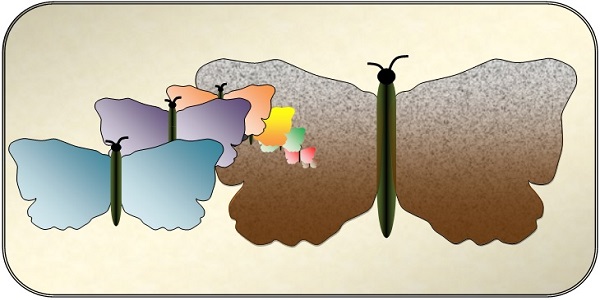
How many unique butterflies do you need to get the complete works of Shakespeare?
The above statement is a slight twist on the "Infinite Monkey Theorem." However, in this case the unique butterfly wing patterns are mathematically generated. When this is done the amount of butterflies is not infinite but finite, although the finite value is enormous; million-digit number enormous.
A beginner's book, "Infinite Butterflies," shows how simple and straight forward discrete philosophy theory is using butterflies. Looking at the patterns on the wings of butterflies the book describes a thought experiment where every unique butterfly is gathered into a butterfly collection in an orderly manner. By the way, among this collection will be the subset of butterflies with the works of Shakespeare on their wings.
The remarkable result reveals that a new pattern appears across all of the butterflies. This overall pattern never seems to change no matter how many more butterflies we add to the collection, as long as it's done so in an orderly way.
It's as if there is a pattern of all finite patterns.*
You may be thinking, "Nice, but so what?" The point is "Infinite Butterflies" is NOT about butterflies; it's about information. The mathematical pattern that's revealed by the butterfly wings is the same pattern inherent throughout finite (i.e., measurable) information .
The exciting aspect presented in "Infinite Butterflies" is that knowing this pattern for all information allows a new "portal" to gathering knowledge (true information).
* "Pattern of all finite patterns" is not to be confused with Russell's paradox, the "Set of all sets." The difference is that the former mathematically addresses infinite sets with finite approximations. The latter assumes complete exactness. A cornerstone in the theory of discrete philosophy is the use of approximation to help buffer the mathematically discouraging "war" between the discrete and the continuous; in other words, between the finite and the infinite. (One could say that borrowing from numerical methods used in engineering and physics by approximating solutions to complex problems that discrete philosophy is a type of "numerical philosophy" approximating its way-- assumedly-- towards reality.)